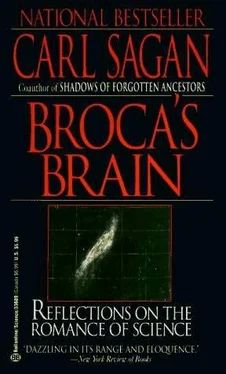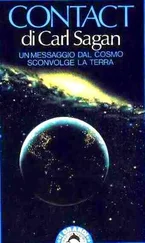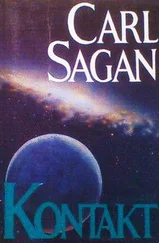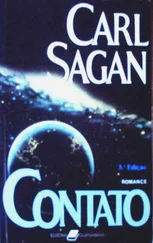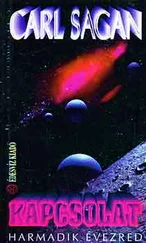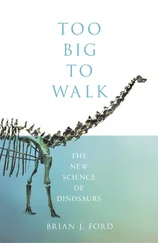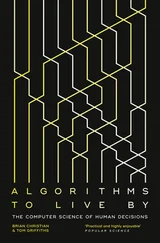Carl Sagan - Broca's Brain - The Romance of Science
Здесь есть возможность читать онлайн «Carl Sagan - Broca's Brain - The Romance of Science» весь текст электронной книги совершенно бесплатно (целиком полную версию без сокращений). В некоторых случаях можно слушать аудио, скачать через торрент в формате fb2 и присутствует краткое содержание. Жанр: Физика, на английском языке. Описание произведения, (предисловие) а так же отзывы посетителей доступны на портале библиотеки ЛибКат.
- Название:Broca's Brain: The Romance of Science
- Автор:
- Жанр:
- Год:неизвестен
- ISBN:нет данных
- Рейтинг книги:3 / 5. Голосов: 1
-
Избранное:Добавить в избранное
- Отзывы:
-
Ваша оценка:
- 60
- 1
- 2
- 3
- 4
- 5
Broca's Brain: The Romance of Science: краткое содержание, описание и аннотация
Предлагаем к чтению аннотацию, описание, краткое содержание или предисловие (зависит от того, что написал сам автор книги «Broca's Brain: The Romance of Science»). Если вы не нашли необходимую информацию о книге — напишите в комментариях, мы постараемся отыскать её.
Broca's Brain: The Romance of Science — читать онлайн бесплатно полную книгу (весь текст) целиком
Ниже представлен текст книги, разбитый по страницам. Система сохранения места последней прочитанной страницы, позволяет с удобством читать онлайн бесплатно книгу «Broca's Brain: The Romance of Science», без необходимости каждый раз заново искать на чём Вы остановились. Поставьте закладку, и сможете в любой момент перейти на страницу, на которой закончили чтение.
Интервал:
Закладка:
Solar Probe. The Sun is the nearest star, the only one we are likely to be able to examine close up, at least for many decades. A near approach to the Sun would be of great interest, would help in understanding its influence on Earth, and would also provide vital additional tests of such theories of gravitation as Einstein’s General Theory of Relativity. A solar probe mission is difficult for two reasons: the energy required to undo the Earth’s (and the probe’s) motion around the Sun so it can fall into the Sun, and the intolerable heating as the probe approaches the Sun. The first problem can be solved by launching the spacecraft out to Jupiter and then using Jupiter’s gravitation to fling it into the Sun. Since there are many asteroids interior to Jupiter’s orbit, this might possibly be a useful mission for studying asteroids as well. An approach to the second problem, at first sight remarkable for its naïveté, is to fly into the Sun at night. On Earth, nighttime is of course merely the interposition of the solid body of the Earth between us and the Sun. Likewise for a solar probe. There are some asteroids that come rather close to the Sun. A solar probe would approach the Sun in the shadow of a Sun-grazing asteroid (meanwhile making observations of the asteroid as well). Near the point of closest approach of the asteroid to the Sun, the probe would emerge from the asteroidal shadow and plunge, filled with a fluid that resists heating, as deeply into the atmosphere of the Sun as it could until it melted and vaporized-atoms from the Earth added to the nearest star.
Manned Missions. As a rule of thumb, a manned mission costs from fifty to a hundred times more than a comparable unmanned mission. Thus, for scientific exploration alone, unmanned missions, employing machine intelligence, are preferred. However, there may well be reasons other than scientific for exploring space-social, economic, political, cultural or historical. The manned missions most frequently talked about are space stations orbiting the Earth (and perhaps devoted to harvesting sunlight and transmitting it in microwave beams down to an energy-starved Earth), and a permanent lunar base. Also being discussed are rather grand schemes for the construction of permanent space cities in Earth orbit, constructed from lunar or asteroidal materials. The cost of transporting materials from such low-gravity worlds as the Moon or an asteroid to Earth orbit is much less than transporting the same materials from our high-gravity planet. Such space cities might ultimately be self-propagating-new ones constructed by older ones. The costs of these large manned stations have not yet been estimated reliably, but it seems likely that all of them-as well as a manned mission to Mars-would cost in the $100 billion to $200 billion range. Perhaps such schemes will one day be implemented; there is much that is far-reaching and historically significant in them. But those of us who have fought for years to organize space ventures costing less than one percent as much may be forgiven for wondering whether the required funds will be allocated, and whether such expenditures are socially responsible.
However, for substantially less money, an important expedition that is preparatory for each of these manned ventures could be mustered-an expedition to an Earth-crossing carbonaceous asteroid. The asteroids occur mostly between the orbits of Mars and Jupiter. A small fraction of them have trajectories that carry them across Earth’s orbit and occasionally within a few million miles of the Earth. Many asteroids are mainly carbonaceous-with large quantities of organic materials and chemically bound water. The organic matter is thought to have condensed in the very earliest stages of the formation of the solar system from interstellar gas and dust, some 4.6 billion years ago, and their study and comparison with cometary samples would be of extraordinary scientific interest. I do not think that materials from a carbonaceous asteroid are likely to be criticized in the same way that the Apollo returned lunar samples were-as being “only” rocks. Moreover, a manned landing on such an object would be an excellent preparation for the eventual exploitation of resources in space. And finally, landing on such an object would be fun: because the gravity field is so low, it would be possible for an astronaut to do a standing high jump of about ten kilometers. These Earth-crossing objects, which are being discovered at a rapidly increasing pace, are called-by a name selected long before manned spaceflight-the Apollo objects. They may or may not be the dead husks of comets. But whatever their origin, they are of great interest. Some of them are the easiest objects in space for humans to get to, using only the Shuttle technology, which will be available in another few years.
THE SORTS of missions I have outlined are well within our technological capability and require a NASA budget not much larger than the present one. They combine scientific and public interest, which very often share coincident objectives. Were such a program carried out, we would have made a preliminary reconnaissance of all the planets and most of the moons from Mercury to Uranus, made a representative sampling of asteroids and comets, and discovered the boundaries and contents of our local swimming hole in space. As the finding of rings around Uranus reminds us, major and unexpected discoveries are waiting for us. Such a program would also have made the first halting steps in the utilization of the solar system by our species, tapping the resources on other worlds, arranging for human habitation in space, and ultimately reworking or terraforming the environments of other planets so that human beings can live there with minimal inconvenience. Human beings will have become a multi-planet species.
The transitional character of these few decades is evident. Unless we destroy ourselves, it is clear that humanity will never again be restricted to a single world. Indeed, the ultimate existence of cities in space and the presence of human colonies on other worlds will make it far more difficult for the human species to self-destruct. It is clear that we have entered, almost without noticing it, a golden age of planetary exploration. As in many comparable cases in human history, the opening of horizons through exploration is accompanied by an opening of artistic and cultural horizons. I do not imagine that many people in the fifteenth century ever wondered if they were living in the Italian Renaissance. But the hopefulness, the exhilaration, the opening of new ways of thought, the technological developments, the goods from abroad, and the deprovincialization of that age were then apparent to thoughtful men and women. We have the ability and the means and-I very much hope-the will for a comparable endeavor today. For the first time in human history, it is within the power of this generation to extend the human presence to the other worlds of the solar system-with awe for their wonders, and a thirst for what they have to teach us.
PART IV. THE FUTURE
CHAPTER 17

“Will you walk a little faster?” said a whiting to
a snail,
“There’s a porpoise close behind us,
and he’s treading on my tail.”
LEWIS CARROLL,
Alice in Wonderland
FOR MUCH OF human history we could travel only as fast as our legs would take us-for any sustained journey, only a few miles an hour. Great journeys were undertaken, but very slowly. For example, 20,000 or 30,000 years ago, human beings crossed the Bering Strait and for the first time entered the Americas, gradually working their way down to the southernmost tip of South America, in Tierra del Fuego, where Charles Darwin encountered them on the memorable voyage of H.M.S. Beagle. A concerted and single-minded effort of a dedicated band to walk from the straits between Asia and Alaska to Tierra del Fuego might have succeeded in a matter of years; in fact, it probably took thousands of years for diffusion of the human population to carry it so far south.
Читать дальшеИнтервал:
Закладка:
Похожие книги на «Broca's Brain: The Romance of Science»
Представляем Вашему вниманию похожие книги на «Broca's Brain: The Romance of Science» списком для выбора. Мы отобрали схожую по названию и смыслу литературу в надежде предоставить читателям больше вариантов отыскать новые, интересные, ещё непрочитанные произведения.
Обсуждение, отзывы о книге «Broca's Brain: The Romance of Science» и просто собственные мнения читателей. Оставьте ваши комментарии, напишите, что Вы думаете о произведении, его смысле или главных героях. Укажите что конкретно понравилось, а что нет, и почему Вы так считаете.
